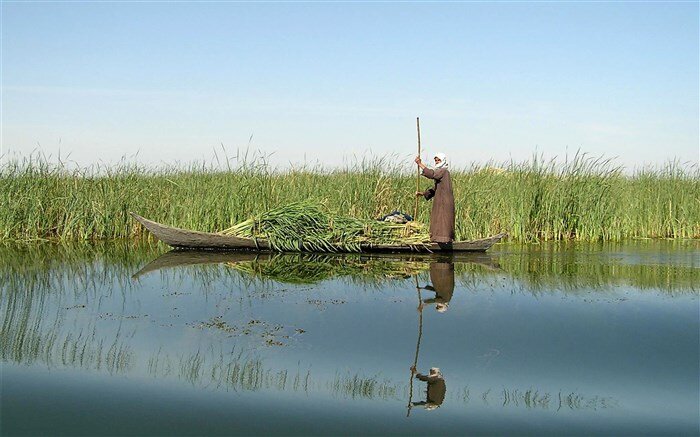Helmand’s water right being pursued as a major demand

TEHRAN – Realization of the water right of Helmand River for Hamoun International Wetland from Afghanistan is being pursued as a major demand using all bilateral and international capacities, head of the Department of Environment (DOE) Ali Salajeqeh, has said.
Iran insistently pursues its demand for environmental water rights from neighboring countries through bilateral meetings, he stated, IRNA reported.
What the neighboring country claims is that the existing conditions are due to climate change, but our data shows that during the announcement of the Afghan government, three to four billion cubic meters of water entered the Hirmand River and then diverted to Gowd-i zerrah, an inland drainage basin covering large parts of southern Afghanistan and Iran.
In 1950, Iran and Afghanistan created the Helmand River Delta Commission with the task of measuring and dividing river flow between the two countries.Considering that Iran has always been a friend and helper of Afghanistan, we expect the neighboring country to fulfill its international obligations, he said.
Hamoun International Wetland also is not in a good condition, unfortunately considering that the neighboring country has not granted the water rights of the Wetland, he lamented, expressing hope to follow up on the issue soon.
In the Sistan region, an international plan is being implemented that pursues the issue of empowering the local wetland communities, which we hope will improve livelihoods in a favorable manner, he noted.
The issue of moisturizing the soil is one of the main ways to solve sand and dust storms in Sistan, which can be done by providing the water rights of wetlands, he also said.
“We should also take advantage of watershed and aquifer projects in the catchment area overlooking the Sistan region to solve the dust phenomenon,” he stated.
Iran-Afghanistan water dispute
The Hamouns are transboundary wetlands on the Iran-Afghan border made up of three lakes: Hamoun-e Helmand, which is entirely in Iran, Hamoun-e Sabari on the border, and Hamoun-e Puzak, almost entirely inside Afghanistan. The three lakes are linked and fed by water from the Helmand River which starts in the Hindu Kush Mountains in Afghanistan.
According to the Atlantic Council (an American think tank in the field of international affairs) disputes over water between Iran and Afghanistan date to the 19th century when Afghanistan was a British protectorate. Frederick Goldsmith, a British officer, drew the Iran-Afghan border along the main branch of the Helmand River.
In 1950, Iran and Afghanistan created the Helmand River Delta Commission with the task of measuring and dividing river flow between the two countries. In 1951, the Helmand River Delta Commission presented its report, recommending that Iran’s share of the Helmand waters amount to twenty-two cubic meters per second. Iran, however, rejected the report, asking for a larger share.
In 1973, the then Iranian prime minister, Amir Abbas Hoveida, and his Afghan counterpart Mohammad Musa Shafiq signed an accord that accepted the flow of water into Iran at twenty-two cubic meters per second with an option for Iran to purchase an additional four cubic meters per second in normal water years.
In return, Iran agreed to allow the ports of Bandar Abbas and Chabahar to be available to Afghanistan without preconditions. However, this agreement was neither ratified nor fully implemented due to the political developments in both countries including a 1973 coup in Afghanistan, the 1979 Iranian revolution, the Soviet occupation of Afghanistan that same year, and finally the rise of the Taliban in 1995.
In the last two decades, once fertile wetlands have drastically dried up. The Taliban government closed the sluices to the Kajaki Dam on Helmand until 2002, which aggravated the impact of the worst drought the region has experienced in many decades, brought about partially by climate change and warming temperatures.
The Hamoun wetlands, which once supported broad plant and animal diversity and were the main source of the region’s economic viability, have nearly dried up due to climate change, dam construction, and other poor water management practices. This has led to large population migrations and a high unemployment rate.
FB/MG
Leave a Comment